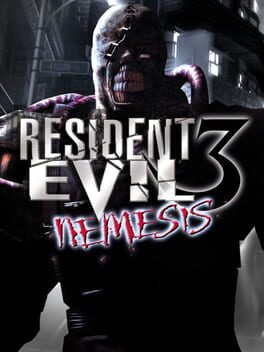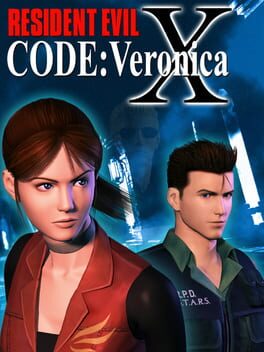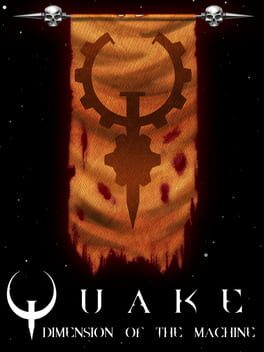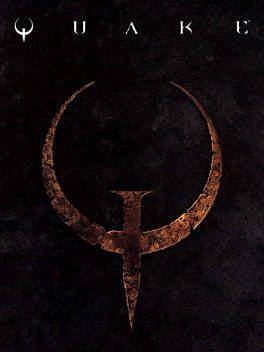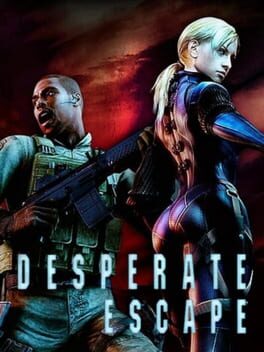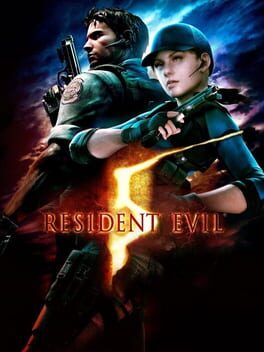ailuridae
BACKER
Tears of the Kingdom is slick, colossal sequel to Breath of the Wild, boasting greater mechanical refinement and providing an unparalleled amount of things to see and do. The game spreads the same activities and collectibles from Breath of the Wild, and then some, across three layers of overworld. If you thought A Link to the Past's two parallel worlds were a lot to explore, just wait until you start filling out the map in this game. It doesn't quite match Elden Ring in terms of shock value, but it just might win in terms of sheer scale. Expect to spend well over a hundred hours doing a handful of the side activities, scouring the world for collectibles, and tackling the main quest. Even if you just go for the latter goal, you're still looking at a good fifty hours of play.
The eagerness of Breath of the Wild to break from the formula established by A Link to the Past was one of its best qualities, and it helped the game feel like a breath of fresh air when compared to prior installments. With Tears of the Kingdom, Nintendo indicates that the Breath of the Wild formula is effectively the series' new baseline, and interviews with producer Eiji Aonuma back this up. In that sense, Tears of the Kingdom is a bit of a disappointment, because it's nowhere near as bold and inventive of a project as its direct predecessor. Expect the same general art style, shrine system, main questline objectives, and past versus present narrative of Breath of the Wild, just with green and gold color tones rather than blue and silver.
I poke and prod at some of the annoying conformities to this new Zelda formula because the unique things that Tears of the Kingdom does are its most interesting aspects. I like when my Zelda games are bold, and this game has a few bold moves of its own. To name a few standouts: building and engineering, the Depths, sages, weapon fusion, and the Master Sword quest. These more radical elements kept me coming back to the game even when I felt a bit bored from the déjà vu, and I'm hoping the next installment can shake things up even more.
The eagerness of Breath of the Wild to break from the formula established by A Link to the Past was one of its best qualities, and it helped the game feel like a breath of fresh air when compared to prior installments. With Tears of the Kingdom, Nintendo indicates that the Breath of the Wild formula is effectively the series' new baseline, and interviews with producer Eiji Aonuma back this up. In that sense, Tears of the Kingdom is a bit of a disappointment, because it's nowhere near as bold and inventive of a project as its direct predecessor. Expect the same general art style, shrine system, main questline objectives, and past versus present narrative of Breath of the Wild, just with green and gold color tones rather than blue and silver.
I poke and prod at some of the annoying conformities to this new Zelda formula because the unique things that Tears of the Kingdom does are its most interesting aspects. I like when my Zelda games are bold, and this game has a few bold moves of its own. To name a few standouts: building and engineering, the Depths, sages, weapon fusion, and the Master Sword quest. These more radical elements kept me coming back to the game even when I felt a bit bored from the déjà vu, and I'm hoping the next installment can shake things up even more.
1998
Out of the original three Resident Evil games, Resident Evil 2 is the most packed to the brim with content. The zapping system helps your playthrough feel unique, and I love how diverse the four main scenarios are. It might be a bit easy, but that makes it the most accessible of these original games, and the easiest to recommend to newcomers.
I was surprised by how much I enjoyed Resident Evil 3: Nemesis, which distinguishes itself from its two predecessors by increasing the emphasis on action and providing more opportunities for player choice. Quick turning and the ability to dodge are two other cool features that make this entry stick out, and the game's arsenal and ammunition system are both incredibly unique as well. Throw in The Mercenaries, and it's suddenly not completely shocking why they branded this as the third game in the series.
Code Veronica and its updated version Code Veronica X are a capstone for the PlayStation era of Resident Evil games, maintaining the core mechanics of those games while upgrading the visuals through the shiny new Sega Dreamcast hardware. We're talking fixed camera angles, tank controls, limited saves, and scarce resources, but this time with more dynamic camera angles and some cool lighting effects. I'm all here for it, too!
But Code Veronica also does very little to move the series forward. Besides the enhanced presentation—which combines in-engine cutscenes and a fully 3D world to make the game feel filmic and atmospheric—there's nothing here that you haven't done in any of the previous Resident Evil games. You shoot monsters, solve puzzles, conserve resources, and learn to deal with annoying characters who shout campy lines of dialogue with off-putting delivery; I'll excuse Super Wesker, though. While Code Veronica certainly is no queen ant, it's worth a shot if you're craving a classic survival horror adventure.
But Code Veronica also does very little to move the series forward. Besides the enhanced presentation—which combines in-engine cutscenes and a fully 3D world to make the game feel filmic and atmospheric—there's nothing here that you haven't done in any of the previous Resident Evil games. You shoot monsters, solve puzzles, conserve resources, and learn to deal with annoying characters who shout campy lines of dialogue with off-putting delivery; I'll excuse Super Wesker, though. While Code Veronica certainly is no queen ant, it's worth a shot if you're craving a classic survival horror adventure.
2019
Replaying the 2019 version of Resident Evil 2—even on the Hardcore difficulty setting—has only reinforced my initial feeling that it's one of the best Resident Evil games. It effortlessly combines the third-person shooter lens of Resident Evil 4 with the streamlined survival horror mechanics of Resident Evil 7: Biohazard. The return of defense weapons is executed perfectly, and the game makes slow zombies threatening again by ingeniously combining their unpredictable movements with the requirement for precision during gunplay. Despite the mixed-bag dialogue and the overly safe visuals, nothing in this series can reproduce the feeling I get in my stomach when I hear Mr. X approaching from an adjacent room.
2023
The original Resident Evil 2 had fixed camera angles, blocky low-polygon models, and pre-rendered backgrounds. It's still a fantastic game, but after 20 years and two series reinventions, you can't blame Capcom for revisiting the source material via a fresh pair of eyes with the 2019 version of Resident Evil 2, which incorporated the best elements from the more recent Resident Evil games. The Resident Evil 2 remake, as a result, feels like a completely different ball game from its original work.
But in the case of the 2023 remake of Resident Evil 4, things are mostly the same. The game adopts the more grounded, gritty, and horror-focused tone of the past couple of remakes but maintains the right beats from the original work to show that it's not missing the point. The over-the-shoulder camera stays; there remains a heavy emphasis on careful positioning, precision, and timing in combat; and Leon is still trying his darndest to be an action hero.
But how can I complain? It's tense, action-packed, and visually stunning, and the gameplay loop is immensely satisfying. It also benefits—like the Resident Evil 2 remake—from having a few surprises along the way that deviate from the original work. There's more Luis, more Ashley, unique level segments, stealth mechanics, a Platinum-style parry feature, several new enemy types, and an entire sub-quest system that provides enticing rewards. The famous quick-time events are also fewer in number and significantly more tasteful with their execution. It might not be the "Aha!" moment that Resident Evil 2 was in 2019, but Resident Evil 4 is a stellar reimagining of an already stellar game, and it's absolutely worth your time if you love this series.
But in the case of the 2023 remake of Resident Evil 4, things are mostly the same. The game adopts the more grounded, gritty, and horror-focused tone of the past couple of remakes but maintains the right beats from the original work to show that it's not missing the point. The over-the-shoulder camera stays; there remains a heavy emphasis on careful positioning, precision, and timing in combat; and Leon is still trying his darndest to be an action hero.
But how can I complain? It's tense, action-packed, and visually stunning, and the gameplay loop is immensely satisfying. It also benefits—like the Resident Evil 2 remake—from having a few surprises along the way that deviate from the original work. There's more Luis, more Ashley, unique level segments, stealth mechanics, a Platinum-style parry feature, several new enemy types, and an entire sub-quest system that provides enticing rewards. The famous quick-time events are also fewer in number and significantly more tasteful with their execution. It might not be the "Aha!" moment that Resident Evil 2 was in 2019, but Resident Evil 4 is a stellar reimagining of an already stellar game, and it's absolutely worth your time if you love this series.
If Dimension of the Past was an ode to the original Quake, then Dimension of the Machine is an ode to boomer shooters in general. The levels in this episode are massive, often evoking Half-Life rather than Quake. Dimension of the Machine is also the best-looking Quake episode by a mile, with MachineGames taking full advantage of the new Quake port's colored lightmaps and dynamic shadows. This episode is probably the best collection of official Quake levels since the original game—it's a delightful gift to the community 25 years after Quake's release.
2021
Lost in Nightmares is short and syrupy, spending one hour trying to evoke nostalgia in the player by shoveling references to the original Resident Evil into their mouth. There’s some solid cooperative puzzling sandwiched in the middle of the experience, and it does a better job of building tension than the main game. However, it's over in the blink of an eye, and the combat segments are fairly inert, which feels unacceptable given that this is Resident Evil 5.
This is a heavily streamlined Resident Evil 4 with increased emphasis on precise and brutal gunplay, light third-person puzzling, and campy action film nonsense. It's much more linear and leans heavily into its mission-based structure, keeping each level straightforward but replayable. One could argue that Resident Evil 5 is just a watered-down Resident Evil 4 if not for Sheva, whose presence is reminiscent of the second player character in the older games. She elevates this game from a trivial follow-up to a bold new direction for the series.
Overall, the game would be a worthy sequel to Resident Evil 4 if not for its sorely mishandled setting. Resident Evil 5 is the most political game in the series, and that's too ambitious for Capcom, whose writers come off as out-of-touch and toothless. There's talk of imperialism, terrorism, and eugenics, but it's all just a backdrop for the tentacle monster battles. Don't touch a subject like Western imperialism in Africa if you're not going to do anything productive with it, especially if your portrayals of native Africans come off as racist.
Overall, the game would be a worthy sequel to Resident Evil 4 if not for its sorely mishandled setting. Resident Evil 5 is the most political game in the series, and that's too ambitious for Capcom, whose writers come off as out-of-touch and toothless. There's talk of imperialism, terrorism, and eugenics, but it's all just a backdrop for the tentacle monster battles. Don't touch a subject like Western imperialism in Africa if you're not going to do anything productive with it, especially if your portrayals of native Africans come off as racist.
I played a few rounds of this, and it's awful. This DLC drops players into the Mercenaries levels from the original game and pits them against each other in a barebones competitive game mode. Like Mercenaries, you start each game by picking a character with a fixed loadout. Getting defeated can cause you to drop your weapon, but there are other weapons to pick up that are haphazardly strewn around each level. You can actually engage in shootouts with other players in this game, which sounds cool on paper. Unfortunately, the base gameplay does NOT feel designed around this. Players do not react appropriately to being shot and weapons feel exceptionally weak, leading to duels that feel more like water gun fights. There are two different modes: one where you compete to kill zombies and another where you compete to kill players. Neither mode does anything special, and both lack a satisfying gameplay loop to keep you entertained.
But the worst part of this experience is that there are no progression or matchmaking systems in place. You can use points from the main game to purchase Versus mode characters, so you don't even need to play the damn mode to unlock everything in it. If you want to go online by yourself, you either have to join a lobby that some random person created elsewhere in the world or create your own lobby. This game is dead, dead, dead, and the players who do play are skilled. I found myself getting kicked from lobbies because of my poor performance, which isn't a particularly friendly way to welcome new players. Even when I did get to play, I was consistently underwhelmed by the experience. Matches drag on and you never feel a sense of progression.
Maybe if you have some friends to play with, this game mode could buy you a few hours of chuckling and guffawing at how sloppy it feels. Otherwise, just pass and play the base game.
But the worst part of this experience is that there are no progression or matchmaking systems in place. You can use points from the main game to purchase Versus mode characters, so you don't even need to play the damn mode to unlock everything in it. If you want to go online by yourself, you either have to join a lobby that some random person created elsewhere in the world or create your own lobby. This game is dead, dead, dead, and the players who do play are skilled. I found myself getting kicked from lobbies because of my poor performance, which isn't a particularly friendly way to welcome new players. Even when I did get to play, I was consistently underwhelmed by the experience. Matches drag on and you never feel a sense of progression.
Maybe if you have some friends to play with, this game mode could buy you a few hours of chuckling and guffawing at how sloppy it feels. Otherwise, just pass and play the base game.
2013
A tepid attempt to fill some story gaps in Resident Evil 4, Separate Ways treads almost no new ground during its 4-hour runtime. Ada's arsenal is almost identical to Leon's—bar the new, crowd-decimating crossbow—and she encounters many of the same scenarios and bosses which Leon trampled during his game. This isn't long enough to be like one of the alternate A-campaigns from the older games, and it certainly isn't varied enough to feel like one of the B-campaigns. I guess Separate Ways is worth it if you're craving more Resident Evil 4 and you have a penchant for explosive crossbows. Otherwise, don't sweat missing this.
2011
Resident Evil 4 cranks everything unique to Resident Evil up to eleven, but it also boasts new elements inspired by contemporary action games like Metal Gear Solid. This installment has some of the slickest gunplay ever put in a video game, with particular emphasis being placed on precision, reaction time, strategic positioning of the player character, and maintaining crowd control. There are ineffective plot elements, audiovisual shortcomings, and complete submission to campy action tropes—but those aspects are completely washed away by the downpour of lead, blood, and slimy appendages. There is no analog in other video games to the feeling you get in Resident Evil 4 when you explode a villager's head with a Mauser C96 handgun.


